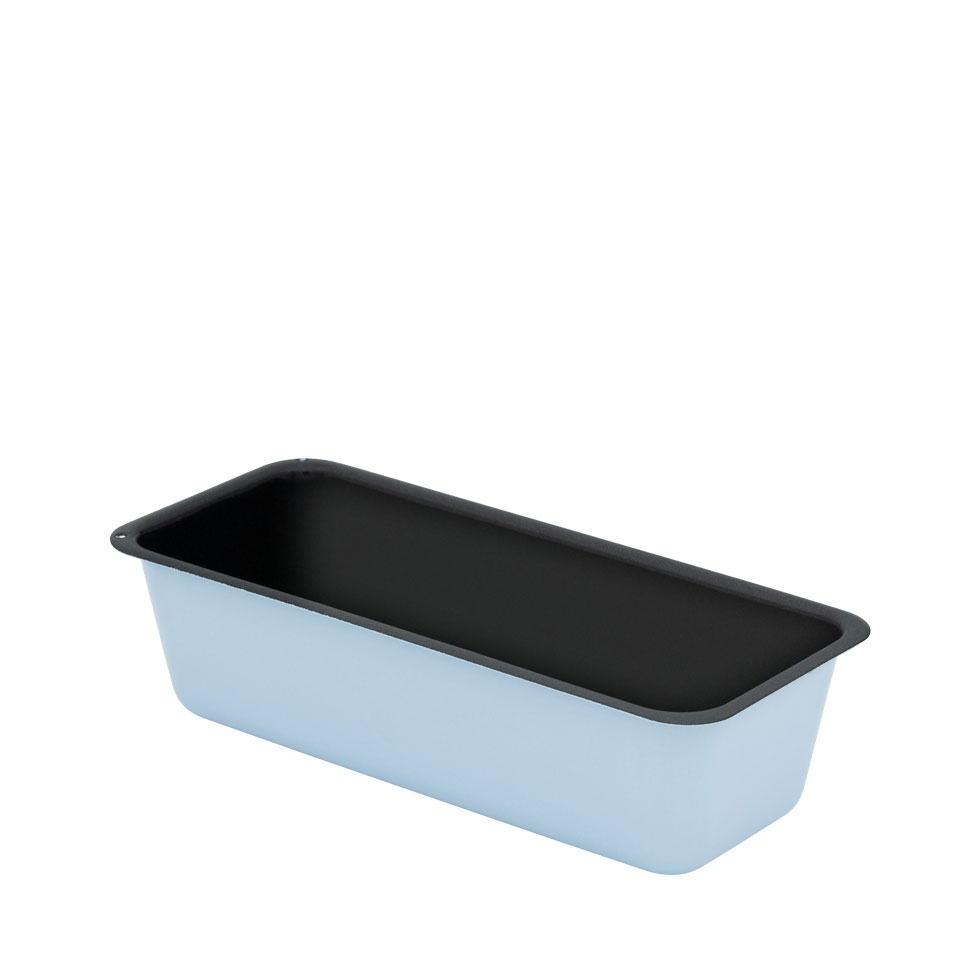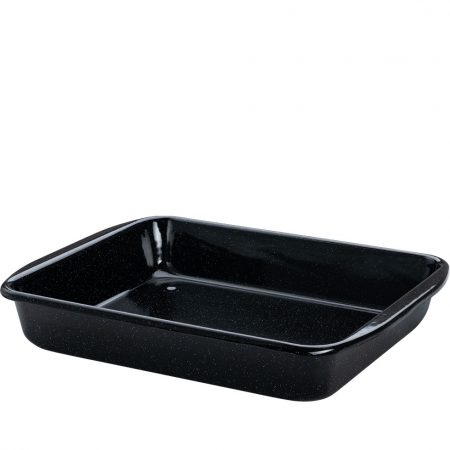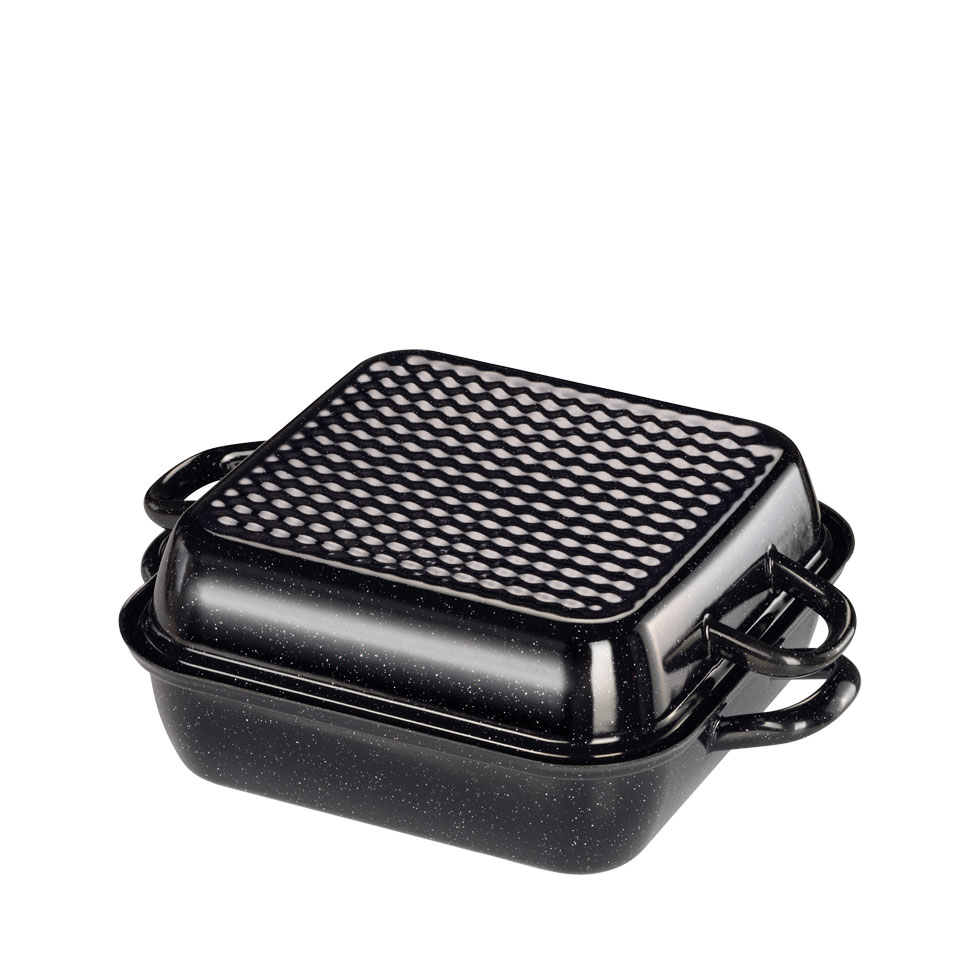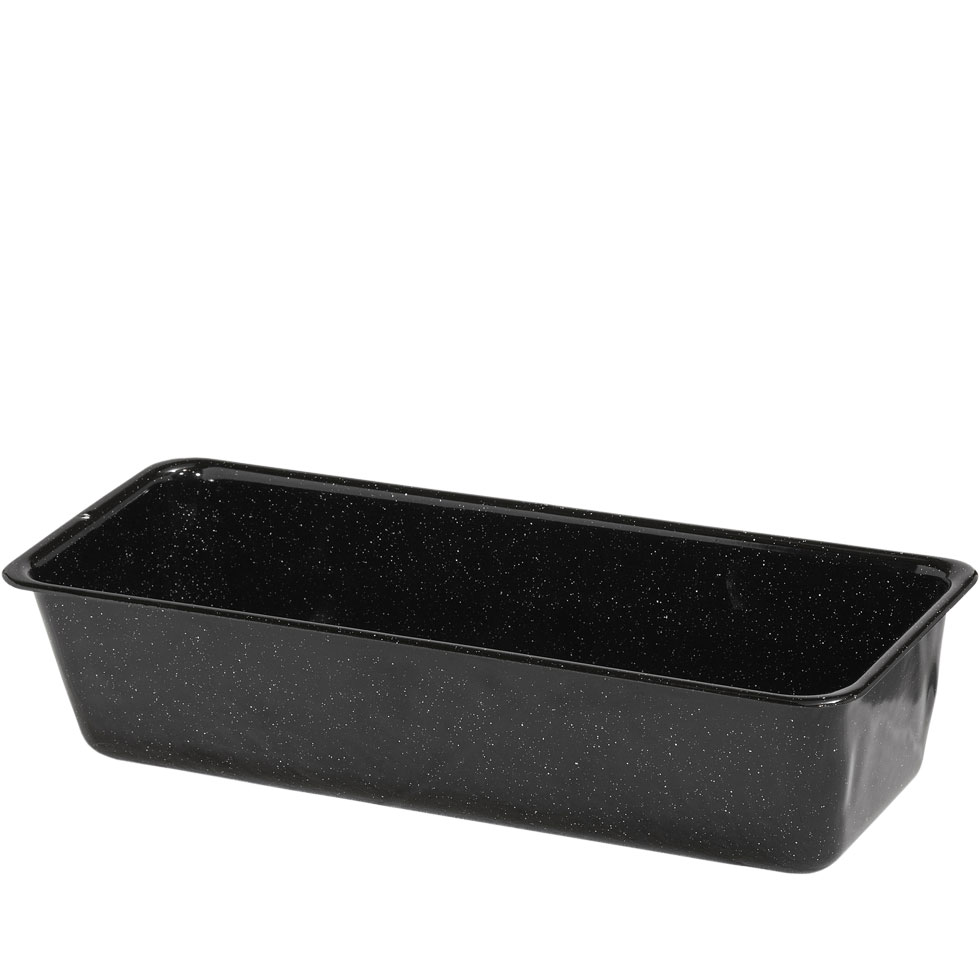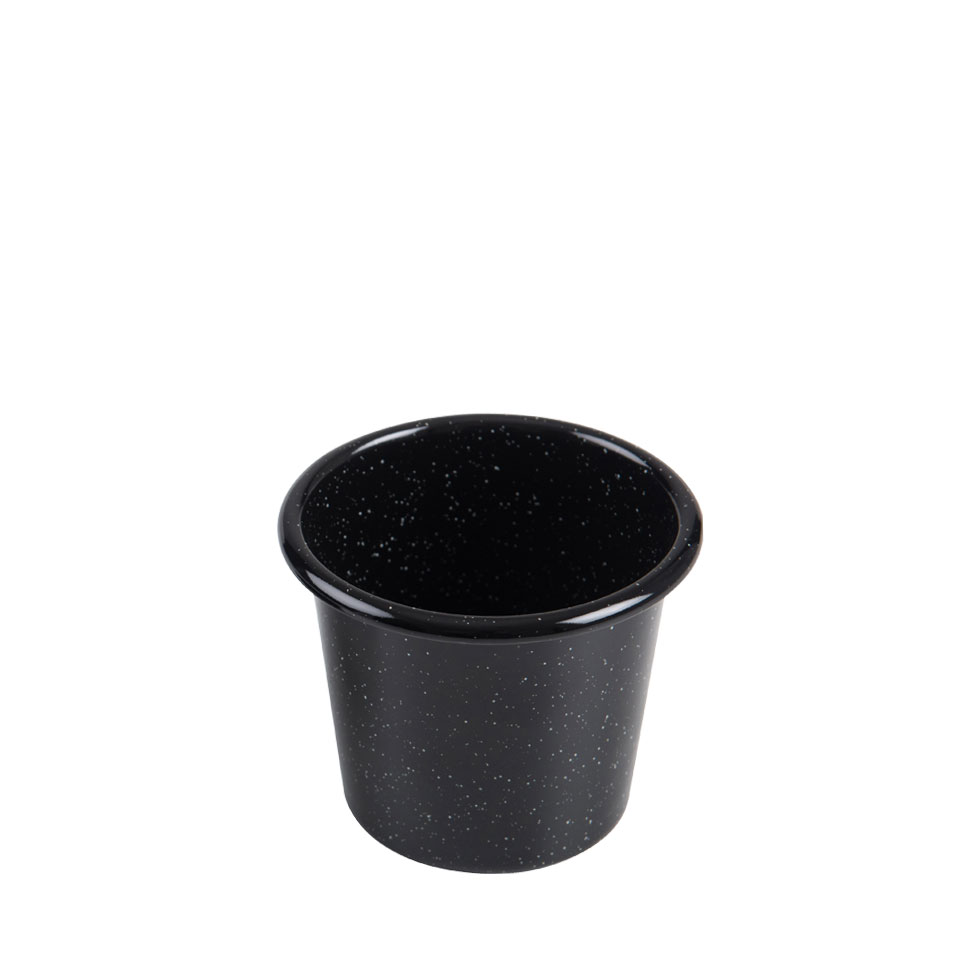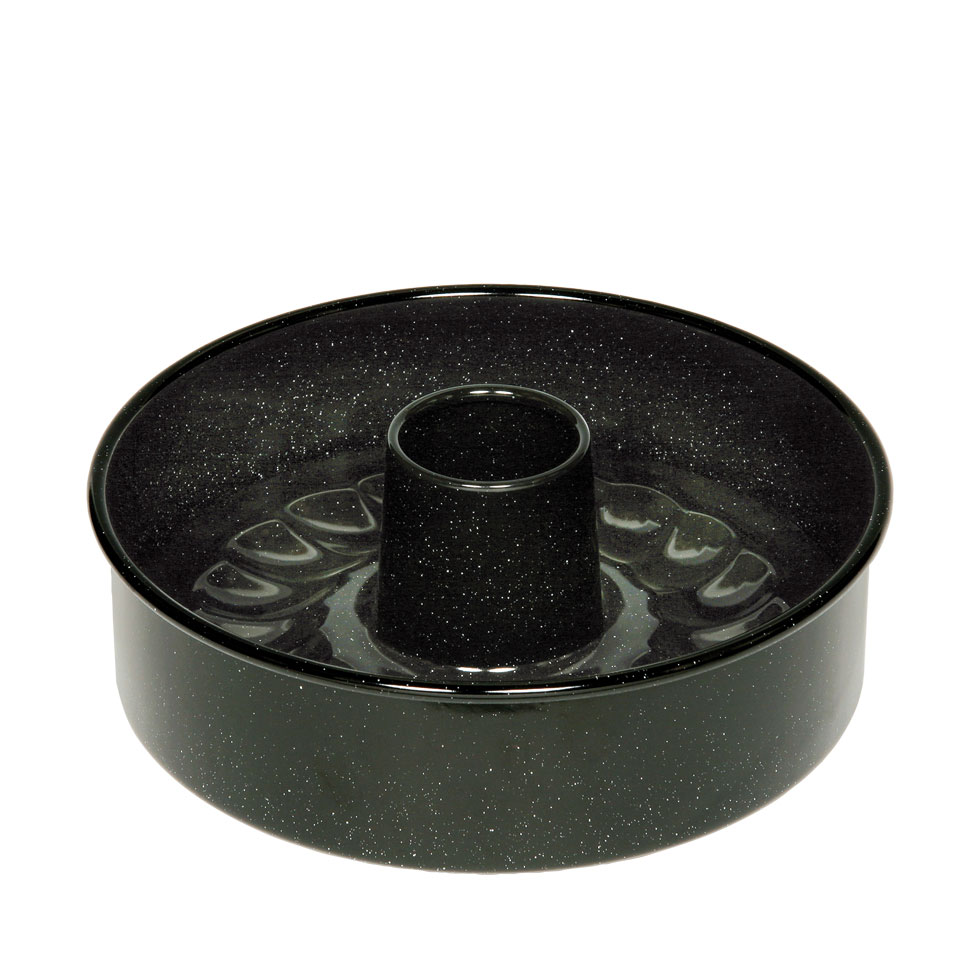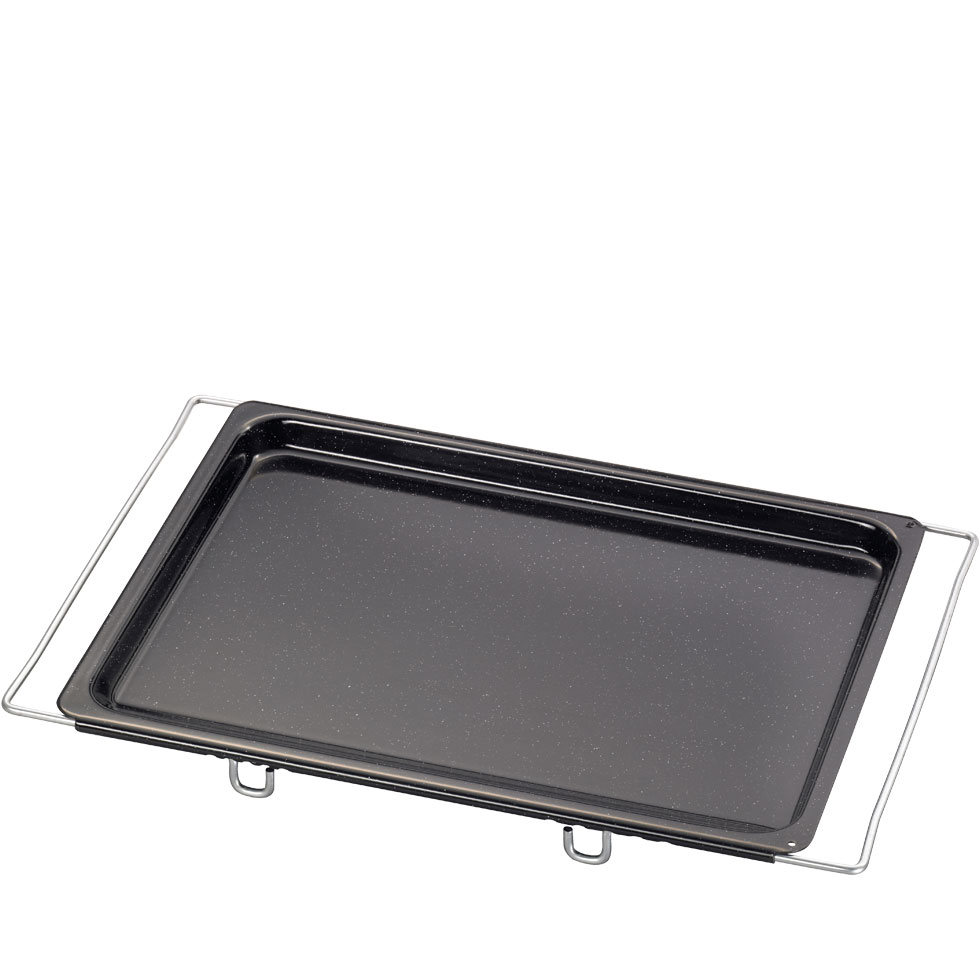Description
Features:
- Enamel tin for cakes, bread, pastries and parfaits
- Length 25 cm, width 10 cm, height 7 cm
- Capacity 1,50 liter
- Baking enamel = anthracite-coloured on the inside, light blue on the outside
- Particularly easy to unmould
- For energy-efficient baking
- Cut and scratch-resistant
- Suitable for ovens
- Resistant to fruit acid
- Prevents bacteria growth and is flavour-neutral
- Easy to clean
- Recyclable
- CO2-neutral production in Austria
Description:
The loaf tin is the most popular type of pan when it comes to baking long instead of round cakes. As the tin is incredibly versatile, it can also be used for many other things aside from cakes and
it can be used in any type of oven. The iron core distributes the heat evenly, giving you exceptional baking results. The baking enamel mould is particularly easy to demould (before filling the dough, the mould must be greased and sprinkled with flour or breadcrumbs – see also tip below). The tin itself is also very easy to clean thanks to its non-porous, smooth surface.
Enamel is made from iron fused with glass at high temperatures, therefore it’s made from natural raw materials.
Our enamel cookware is suitable for use with all types of cookers (gas, electric, ceramic, induction and even open flame). Thanks to the iron core, the heat is conducted quickly and is then retained. This ensures sustainable, energy-efficient cooking.
The non-porous, smooth, glass surface guarantees perfect hygiene, as it’s flavour-neutral, prevents bacteria growth and is easy to clean. When used and cared for properly, enamel cookware can provide years of cooking enjoyment and will maintain its characteristic glossy appearance.
Uses:
Aside from cakes, the loaf-cake tin can also be used to bake small loaves of bread. The practical loaf-cake tin is also perfect for making pastries, meatloaf and iced parfaits as the enamel preserves the flavours perfectly and the non-porous, smooth surface prevents bacteria growth, therefore ensuring good hygiene.
Tips:
Make sure to grease the enamel baking tin well and to flour or crumb it before adding the cake mixture. This ensures that the cake, and anything else that you choose to bake in the tin, will not stick and can be easily removed.




